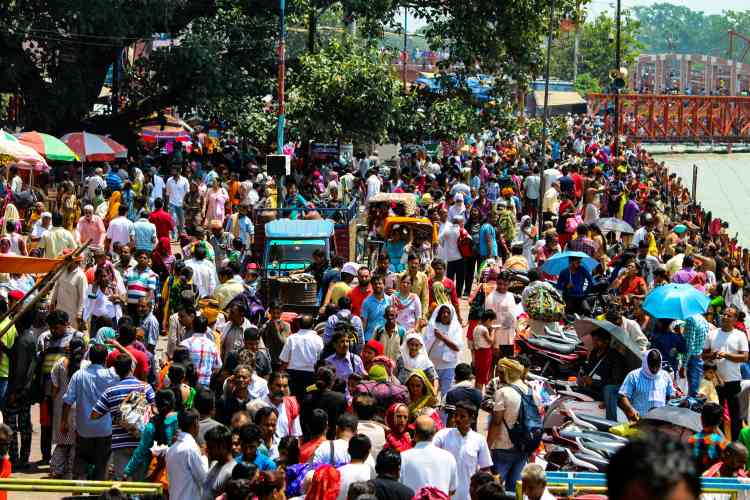
The Indian middle class has not yet overcome its economic challenges, as evidenced by the sluggish sales of fast-moving consumer goods (FMCG) in the October-December quarter of 2023. Affordability and inflation continue to be significant concerns, with sales of everyday essentials like soaps, edible oil, shampoo, and biscuits remaining low. This indicates a reluctance or inability among consumers to spend on daily necessities.
Data from retail intelligence firm Bizom reveals a 2.1% year-on-year decline in urban sales for the quarter ending December 2023, despite urban residents typically having higher incomes than their rural counterparts. A previous Bizom study highlighted that the middle class and affluent consumers (MAC) segment is rapidly growing within the FMCG industry and is expected to account for 40% of Indian consumption by 2025. This underscores the pivotal role of the Indian middle class in the sector’s sales.
READ | Budget 2025: Infrastructure blitz may continue; green energy, welfare schemes focus areas
While the Indian middle class has undeniably expanded in recent years, its journey towards economic security remains bumpy. The recent sluggish sales of FMCG, despite the segment’s projected growth, paint a stark picture. Affordability and inflation continue to weigh heavily, forcing even everyday essentials like soaps and biscuits down the priority list. This reluctance to spend highlights the precarious footing of a class still grappling with basic needs.
The Indian middle class
The concept of the middle class becomes particularly significant around the budget season, as people look to the finance minister for measures to increase their disposable income. According to a recent survey by People Research on India’s Consumer Economy (PRICE), India’s middle class is defined by a range of income and lifestyle criteria. This group, with annual incomes of Rs 5-30 lakh, has grown to represent 31% of the population in 2020-21 from 14% in 2004-05. However, defining the Indian middle class remains complex due to varying parameters.
Factors such as rapid urbanisation, higher education levels, and economic growth have contributed to the expansion of the middle class. With the largest millennial population entering the workforce, there is an increase in disposable income, making the middle class the largest consumer base for FMCG companies. These companies anticipate a stable economy, better monsoon, and controlled inflation in 2024 to boost consumption.
The middle class question
The discussion among economists has shifted from quantifying the middle class to understanding its purpose and role in the economy. The focus is on improving the quality of life for this segment and its contribution to economic growth. However, a small portion of the middle class currently plays its expected role, highlighting the need for new metrics to effectively understand and support this group. The Brookings Institute suggests considering cash, credentials, and culture to better define the middle class, with an emphasis on credentials.
A robust middle class is crucial for any economy, acting as a stabilising force through diverse consumption patterns, savings habits, and entrepreneurial spirit. In India, where education and informal employment dominate, a thriving middle class is essential for productivity, upward mobility, and economic progress. However, realising this vision requires addressing employment, infrastructure, and living standards.
The upcoming interim budget is a critical moment for the middle class, with high expectations for tax relief, job creation, and improvements in affordable housing, education, and healthcare. These measures are crucial for enhancing the quality of life and economic contribution of the middle class, especially in the context of upcoming elections.
This vulnerability becomes even more evident when considering the urban segment, traditionally seen as the middle class’s engine. Bizom’s data reveals a 2.1% dip in urban FMCG sales despite higher incomes, exposing underlying cracks in their economic armour. Yet, the potential of this group cannot be ignored. The MAC segment’s projected 40% consumption share by 2025 underscores their pivotal role in driving the industry. It is a double-edged sword: immense possibilities coupled with persistent challenges.
The upcoming budget presents a crucial opportunity to address these challenges. Measures like tax relief, job creation, and investments in affordable housing, education, and healthcare are not just economic boons, but critical steps towards a thriving middle class. A vibrant middle class, defined not just by income but by access to opportunity, is not just an aspiration, but an engine for India’s future. This budget can be the key to igniting that engine, propelling the nation towards a more equitable and prosperous tomorrow.
Anil Nair is Founder and Editor, Policy Circle.

